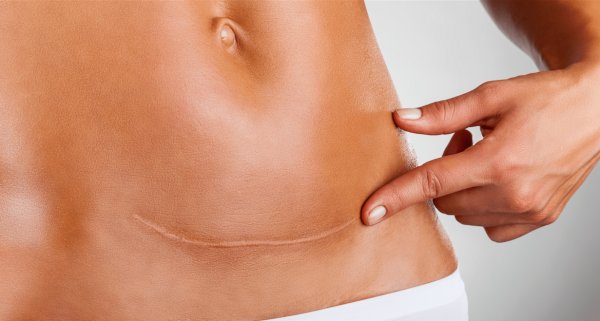It has been 9 months of pregnancy and now your bundle of joy is about to arrive. You may start hearing lots opinions from friends and mothers, as well as reading information on the internet. It is easy to get overwhelmed, confused and misinformed when it comes to delivery. This article will dispel some of the most common myths about childbirth.
Drinking castor oil can be used to bring on my labor if overdue:
Castor oil is an old-school remedy to induce labor in a woman. The idea is that castor oil stimulates the bowel, which in turn stimulates contractions of the uterus. However, it can lead to unpleasant side effect such as nausea and diarrhea and is not recommended in modern obstetric practice.
Women with wide hips have an easier delivery:
While it seems like the baby would have more space passing through a woman with wide hips it is not an accurate assumption. The external shape of your curves is not related to the pelvis proportions inside. During birth, baby’s head molds to fit into the vaginal canal and mother’s hips widen to accommodate the baby. The ease of delivery does depend on the size of the woman’s pelvis, but many other factors also play a role, some of them include baby’s size and position.

If I have written a birth plan I know exactly what will happen during my delivery:
Having a birth plan ahead of time is a great idea, but there is no way to predict how your labor will proceed. Whilst doctors and midwives will respect your wishes, giving birth can be unpredictable and certain factors are outside your control. For example, a woman may plan a vaginal delivery but may need an emergency c-section due to a complication.
An Epidural and a Spinal anaesthesia are the same:
Epidural and Spinal anesthesia are procedures that numb parts of your body to give pain relief, which are given by anesthesiologist. They are both administered via injections in your lower spine and allow you to stay awake. Whilst there are some similarities between the two procedures, is important to understand the differences:
An epidural involves injection of medication into a space between the vertebrae and the spinal fluid, called the epidural space. Pain relief effect takes 10 to 30 minutes and used for longer procedures such as natural childbirth. There is usually a small tube, called catheter, left in place to allow a top up of medication.
A spinal is an injection of medication directly into the spinal fluid. This is done as one shot of medication and takes effect right away. This is used for shorter procedures such as elected C-section delivery.
There is also a technique called Combined Spinal Epidural (CSE), where both anaesthesias are used together. This technique offers the rapid onset of pain relief of a spinal and the continuous long-lasting relief of an epidural.

Epidurals and Spinals are given with a big needle and it’s painful:
Before Epidural and Spinal blocks are administered you are given a local anesthetic into your lower back, which is not painful but may feel like a sting for 10 seconds. Spinal needle is the width of a thick piece of hair. Epidural needle is the size of a pencil lead. Local anesthetic is in place before Epidural and Spinal needles go in, so there is no pain but you may feel pressure.
Epidural and Spinal anaesthesia are dangerous:
Epidural and Spinal anesthesia are very reliable and safe, but they do have some risks. Your anesthesiologist will take you though the complete list of side effects and possible complications. To ensure safety, during your delivery the anesthesiologist will be monitoring your pulse, blood pressure and oxygen levels in your blood.
Epidural during labor increases your chances of doctor intervention delivery:
It is true, that epidural can, slow down the second stage of labor and make it harder to push the baby. Nevertheless, a 2005 study (by Northwestern University in Chicago) have shown that there is no increase in the risk of cesareans when epidurals are administered during labor. In addition, the epidural dose can be lowered to make it easier to push, thus, reducing the likelihood of forceps or vaccum-assisted delivery.
A Cesarean-section is less painful than a vaginal birth:
C-section a major abdominal surgery, and whilst you may not feel any pain during the delivery there is discomfort afterwards. In addition, c-section carries the risk of complications associated with surgery as well as post-operative recovery time and a scar, which is not the case with the vaginal birth.

My stomach will flatten immediately after birth:
For most women this is not the case. After delivery, women have a round, soft stomachs also referred to as ‘mummy tummy’. Even when the baby is out the uterus only shrinks to about 60% of its size post-birth. It takes 6 to 8 weeks for the hormonal changes to take place and for the uterus to return to its pre-pregnancy size.
‘Kate Middleton was praised for showing her post-baby tummy after both of her deliveries.’
Images credit: dollarphotoclub.com
Article from: www.fertilitypharmacy.com.au
